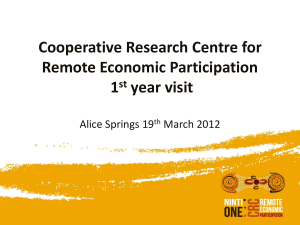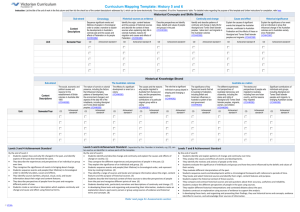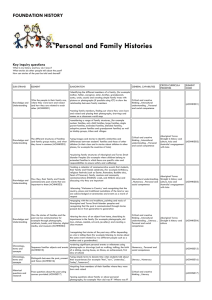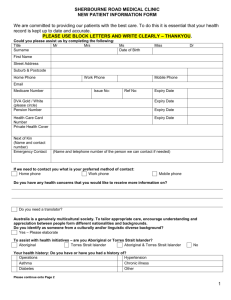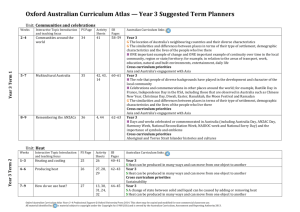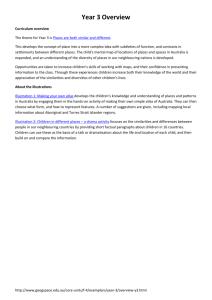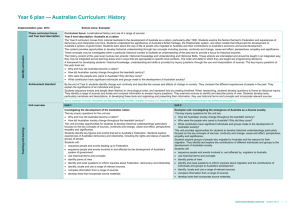Language variation and change - Australian National Curriculum
advertisement
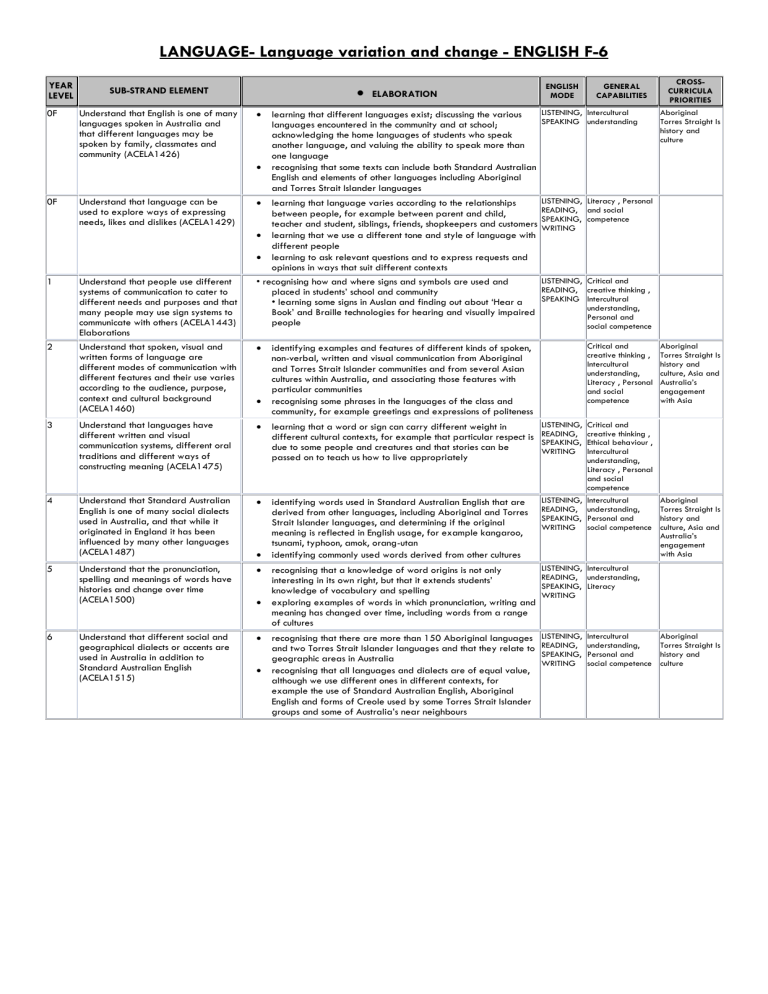
LANGUAGE- Language variation and change - ENGLISH F-6 YEAR LEVEL 0F SUB-STRAND ELEMENT Understand that English is one of many languages spoken in Australia and that different languages may be spoken by family, classmates and community (ACELA1426) 0F Understand that language can be used to explore ways of expressing needs, likes and dislikes (ACELA1429) 1 Understand that people use different systems of communication to cater to different needs and purposes and that many people may use sign systems to communicate with others (ACELA1443) Elaborations Understand that spoken, visual and written forms of language are different modes of communication with different features and their use varies according to the audience, purpose, context and cultural background (ACELA1460) 2 ELABORATION learning that language varies according to the relationships between people, for example between parent and child, teacher and student, siblings, friends, shopkeepers and customers learning that we use a different tone and style of language with different people learning to ask relevant questions and to express requests and opinions in ways that suit different contexts • recognising how and where signs and symbols are used and placed in students’ school and community • learning some signs in Auslan and finding out about ‘Hear a Book’ and Braille technologies for hearing and visually impaired people GENERAL CAPABILITIES LISTENING, Intercultural learning that different languages exist; discussing the various SPEAKING understanding languages encountered in the community and at school; acknowledging the home languages of students who speak another language, and valuing the ability to speak more than one language recognising that some texts can include both Standard Australian English and elements of other languages including Aboriginal and Torres Strait Islander languages ENGLISH MODE LISTENING, Critical and READING, creative thinking , SPEAKING Intercultural understanding, Personal and social competence Critical and creative thinking , Intercultural understanding, Literacy , Personal and social competence identifying examples and features of different kinds of spoken, non-verbal, written and visual communication from Aboriginal and Torres Strait Islander communities and from several Asian cultures within Australia, and associating those features with particular communities recognising some phrases in the languages of the class and community, for example greetings and expressions of politeness Understand that languages have different written and visual communication systems, different oral traditions and different ways of constructing meaning (ACELA1475) learning that a word or sign can carry different weight in different cultural contexts, for example that particular respect is due to some people and creatures and that stories can be passed on to teach us how to live appropriately LISTENING, READING, SPEAKING, WRITING Critical and creative thinking , Ethical behaviour , Intercultural understanding, Literacy , Personal and social competence 4 Understand that Standard Australian English is one of many social dialects used in Australia, and that while it originated in England it has been influenced by many other languages (ACELA1487) identifying words used in Standard Australian English that are derived from other languages, including Aboriginal and Torres Strait Islander languages, and determining if the original meaning is reflected in English usage, for example kangaroo, tsunami, typhoon, amok, orang-utan identifying commonly used words derived from other cultures LISTENING, READING, SPEAKING, WRITING Intercultural understanding, Personal and social competence 5 Understand that the pronunciation, spelling and meanings of words have histories and change over time (ACELA1500) recognising that a knowledge of word origins is not only interesting in its own right, but that it extends students’ knowledge of vocabulary and spelling exploring examples of words in which pronunciation, writing and meaning has changed over time, including words from a range of cultures LISTENING, Intercultural READING, understanding, SPEAKING, Literacy WRITING Understand that different social and geographical dialects or accents are used in Australia in addition to Standard Australian English (ACELA1515) recognising that there are more than 150 Aboriginal languages and two Torres Strait Islander languages and that they relate to geographic areas in Australia recognising that all languages and dialects are of equal value, although we use different ones in different contexts, for example the use of Standard Australian English, Aboriginal English and forms of Creole used by some Torres Strait Islander groups and some of Australia’s near neighbours LISTENING, READING, SPEAKING, WRITING 6 Aboriginal Torres Straight Is history and culture LISTENING, Literacy , Personal READING, and social SPEAKING, competence WRITING 3 CROSSCURRICULA PRIORITIES Intercultural understanding, Personal and social competence Aboriginal Torres Straight Is history and culture, Asia and Australia’s engagement with Asia Aboriginal Torres Straight Is history and culture, Asia and Australia’s engagement with Asia Aboriginal Torres Straight Is history and culture



